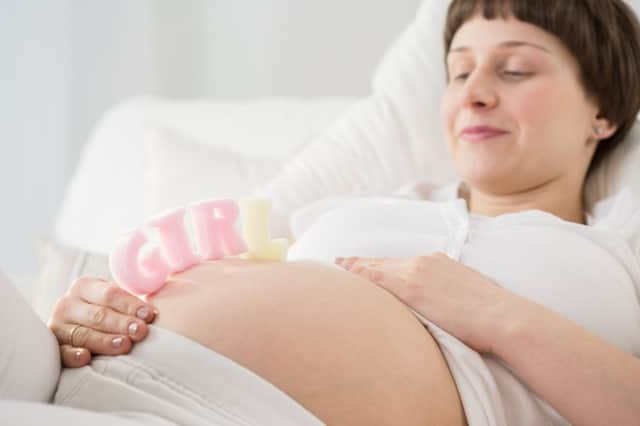Reading fairy tale stories can calm unborn babies


Scientists at the University of Dundee discovered that reading fairy tales to unborn babies, when the mother was between 21 and 33 weeks pregnant, calmed babies down, with some even crossing their arms while they relaxed in the womb.
Researchers observed the foetuses using high-definition scans and found they also moved their arms, heads and mouth in response to mothers stroking their bumps.
Advertisement
Hide AdAdvertisement
Hide AdA total of 23 women took part in the study and were asked to read a fairy tale – either the Three Little Pigs or Jack And The Beanstalk – and stroke their abdomens with light pressure.
The study found that a mother’s stroke was a powerful trigger for foetuses to move and that hearing their mother recite a fairy tale calmed them down.
When the foetus was not given any stimulation they moved less.
“This is the first time we have looked at how the foetus responds to its mother’s touch and her voice. We were interested in the behavioural reactions of the foetus to social and environmental stimulation before they are born,” said Viola Marx, the researcher who led the study.
“Once we had established that the foetus was awake – usually by giving the mother a cold drink of water and observing it moving – we started the tests.
“When the mother touched her abdomen, the foetus increased its arm, head and mouth movements and they were bigger movements than when there had been no stimulation.
“When we analysed their head, arm, finger, mouth and other movements, with millisecond accuracy, foetuses seemed to increase their movements to the touch of the mother, as if maternal touch stimulated their activity.
“Foetuses, however, decreased their movements when the mother spoke, as if they calmed down and became still, listening to the familiar voice when compared to the mother’s touch and the control situation.”
Advertisement
Hide AdAdvertisement
Hide Ad“Overall, we demonstrated that foetuses listen to their environment and selectively respond to voice or touch,” she added.
The study was carried out at the University’s School of Psychology and has been published in the medical journal Plos One.
Miss Marx added: “The main message of the study is that foetuses actively listen, and then respond to us before they are actually born. So for pregnant women, the everyday acts which may come instinctively, such as stroking her belly and talking to her unborn child, are being responded to from inside the womb from as easily as around five months’ gestation”
High-definition images of foetuses continue to improve the way scientists understand the development of unborn babies in the womb.
Pictures can show babies as young as 21 weeks smiling, yawning and kicking.
These techniques were pioneered by Dr Bernard Benoit of the Princess Grace Hospital in Monaco, who specialises in detecting malformations in early pregnancy.
At around 21 weeks into a pregnancy a baby has eyebrows and eyelids, can swallow, its legs and arms are the right proportions, hair has started to grow and tooth buds are beginning to form.